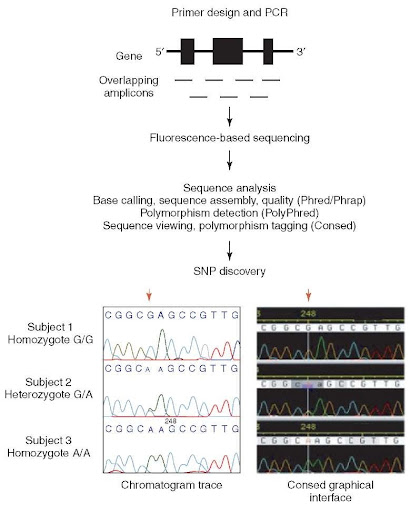
#Dna sequences with a high degree of polymorphism are code
The genomes of humans may be divided into different parts based on known functional properties the coding and noncoding regions mostly do not code for protein. Once formed, it can be inherited, allowing its inheritance to be tracked from parent to child. Two major sources: (1) mutations that may result as chance processes or have been induced by external agents such as radiation and (2) recombination. It can occur in the nucleus or mitochondria. Genomic variability at DNA level can be present in many forms including: single nucleotide polymorphisms, variable number of tandem repeats (e.g., mini- and microsatellites), transposable elements (e.g., Alu repeats), structural alterations, and copy number variations. This chapter reviews the DNA-based genetic markers and their application in medicine, with a particular emphasis on common DNA-based genetic markers, including single nucleotide polymorphisms and short tandem repeats (STRs). The development and use of DNA-based molecular markers is one of the most significant developments in the field of molecular genetics that facilitate the study of genetic variations in health and diseases. Such copy number variations (or CNVs) encompass gene copies, newly discovered CNVs are important sources of genomic diversity. However, with the recent advancement in molecular technology, discoveries have revealed substantial segments of DNA, ranging in size from thousands to millions of DNA bases that could vary in copy number. Throughout the past years, scientists have believed that genes strictly came in two copies in a genome. In recent years, evidence has been accumulated for the involvement of VNTR repeats in a wide spectrum of pathological states. Polymorphic tandem repeated sequences have emerged as important genetic markers and initially, variable number tandem repeats (VNTRs) were used in DNA fingerprinting. Ī major step forward in genome identification is the discovery of about 30–90% of the genome which is constituted by regions of repetitive DNA which are highly polymorphic in nature. SNPs have become very important since technologies for DNA sequencing have become feasible and widely available. Single nucleotide polymorphisms are the most common type of genetic variations in humans, due to their abundance across the human genome single nucleotide polymorphisms (SNPs) have become important genetic markers for mapping human diseases, population genetics, and evolutionary studies. Genomic variability includes a wide range of variations from single base pair change, many base pairs, and repeated sequences. The probability of polymorphic DNA in humans is great due to the relatively large size of human genome.

The human genome comprises 6 billion nucleotides of DNA packaged into two sets of 23 chromosomes, one set inherited from each parent. Genetic polymorphism is the existence of at least two variants with respect to gene sequences, chromosome structure, or a phenotype (gene sequences and chromosomal variants are seen at the frequency of 1% or higher), typical of a polymorphism, rather than the focus being on rare variants. DNA polymorphism serves as a genetic marker for its own location in the chromosome thus, they are convenient for analysis and are often used as in molecular genetic studies. Mapping the human genome requires a set of genetic markers. DNA polymorphisms are endless, and more discoveries continue at a rapid rate. During the last years, the recent advance of molecular technologies revealed new discoveries of DNA polymorphisms. Different forms of DNA polymorphisms can be tracked using a variety of techniques some of these techniques include restriction fragment length polymorphisms (RFLPs) with Southern blots, polymerase chain reactions (PCRs), hybridization techniques using DNA microarray chips, and genome sequencing.

Genomic variability can be present in many forms, including single nucleotide polymorphisms (SNPs), variable number of tandem repeats (VNTRs, e.g., mini- and microsatellites), transposable elements (e.g., Alu repeats), structural alterations, and copy number variations. Polymorphism at the DNA level includes a wide range of variations from single base pair change, many base pairs, and repeated sequences. DNA polymorphisms are the different DNA sequences among individuals, groups, or populations.


 0 kommentar(er)
0 kommentar(er)
